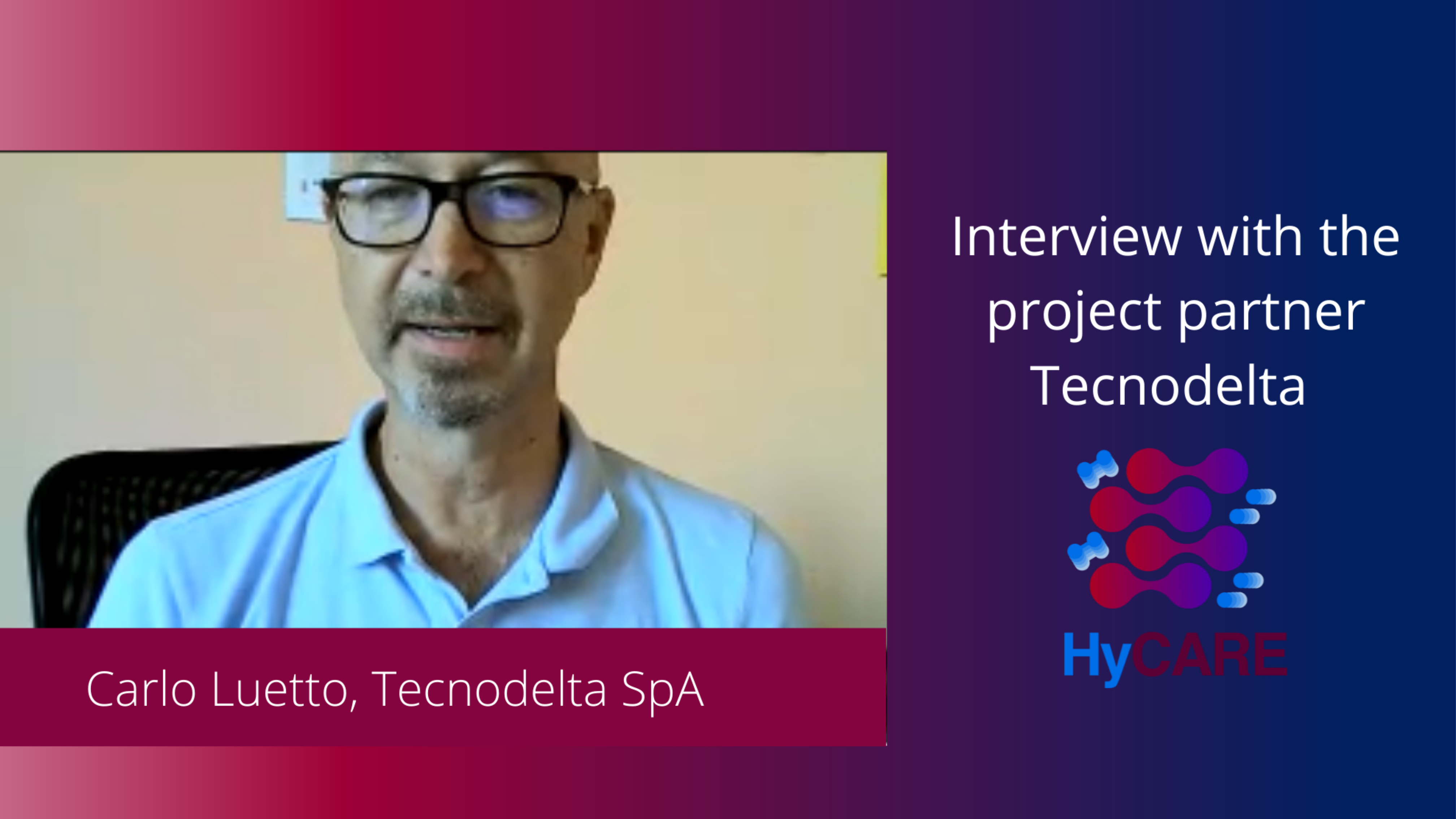Tecnodelta: heat recovery system for the HyCARE tank

Interview with Carlo Luetto, managing Director of Tecnodelta
Author: Marianna Franchino (Environment Park)
One of the main innovative components in the HyCARE system is the heat recovery system (using PCM) integrated with the hydrogen storage tank. The integration of the PCM component contributed to improve the energy efficiency of the entire HyCARE tank. Carlo Luetto, owner of Tecnodelta SpA, talks about the challenges and opportunities of developing this important component.
How did Tecnodelta perform the development of the PCM heat storage module?
Our activity on the PCM tank realisation can be summarised in two main steps. A first step dedicated on the engineering of the system was performed together with FBK, exploring different possible design and operating simulations of the heat exchanger system. After several tests, we selected the most suitable design of the system that allows to recover the heat released by the hydrogen reaction with the metal hydrides in the PCM tank and to reuse it when necessary (through phase exchange materials). This system allows to run without external energy consumption in line with the HyCARE’s project goal. Then, a small-scale prototype was created and sent to Hereon to perform other tests, which gave a second validation on the selected PCM design and confirmation to proceed with the next steps.

After the model and design validation, the last step is the manufacturing and the heat exchanger integration with the other components of the HyCARE’ system. Can you explain us what are the last activities Tecnodelta will perform?
After the prototype validation, we proceeded with the PCM tank manufacturing. Overall, 12 ready -to-use tanks were produced inside Tecnodelta factory site (a PCM module with 6 frames as showed in figure below) and sent to Stühff headquarter for the integration with the MH (metal hydride) tanks. Specifically, we performed the PCM powder melting internally, because the process itself is quite slow. The last step to be performed by Tecnodelta is the integration of the cooling part (cooling/heating fluid in the PCM tanks) with the external circuit, where the fluid is treated to manage the temperature during the system operation. At the end of the project, this equipment will be connected together and installed at the ENGIE site, where Tecnodelta will assist the start-up phase and the other activities for a successful system commissioning.

During this research work, did you find any difficulties? What was the main challenge for Tecnodelta?
From our side, we can say the activity did not show any particular problems. Also, the exploration of the design and heat exchanger model was led in cooperation with the other partners, which allowed to overcome any possible difficulties which might have caused breaks in the process development. Of course, the initial design step was challenging. We were looking for an efficient process able to recover all the heat coming from the hydrogen reaction and to design a heat exchanger with the capacity to melt the PCM immediately. Therefore, the big challenge was really to have a good design of the heat exchanger. From the tests performed, I think we reached that goal, thanks to the really good behaviour showed by the heat exchanger during the preliminary test.
The reached goals result from the partners’ cooperation all along the project, what is the added value to work and cooperate with the international team of the HyCARE project?
Tecnodelta is a small company and the participation in the HyCARE project has been an important opportunity for us to work in a big team of international partners for different reasons. Besides the networking potentialities, the collaboration with other partners allowed us to perform activities inside the consortium that we should have otherwise conducted externally (e.g. material analysis, alloys characterisation, etc) with higher expenditure in terms of time and economic resources. Using the other partners’ equipment, improved the efficiency of all the activities and allowed us to learn from their experiences, giving an overall support to the project goals. It has been a really positive collaboration within the Consortium during these years.